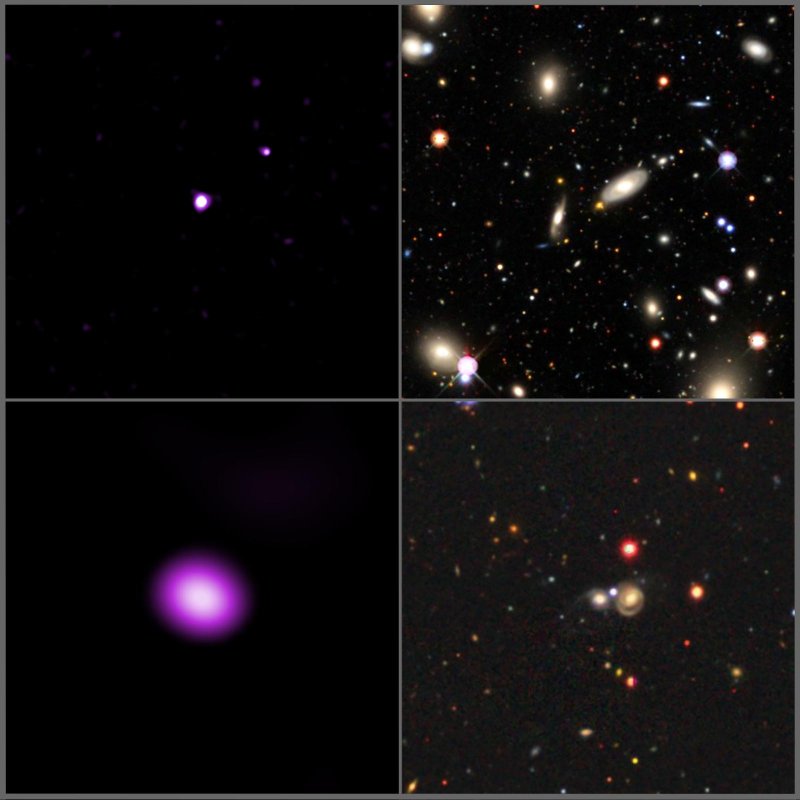A new survey has revealed hundreds of previously unidentified black holes using data from the Chandra Source Catalog and the Sloan Digitized Sky Survey (SDSS). Researchers compared the X-ray and optical data for a class of objects known as “XBONGs” (X-ray bright, optically normal galaxies) to reveal about 400 supermassive black holes. These graphics show these XBONGs in X-rays from Chandra and optical light from SDSS.
Graphics courtesy of NASA/CXC/SAO/D. Kim et al.; Optical/IR: Legacy Surveys/D. Lang (Perimeter Institute)
Jan. 12 (UPI) — NASA’s Chandra X-ray Observatory has revealed hundreds of supermassive astronomical black holes that are millions or even billions of times the mass of the sun, according to a new study.
“Astronomers have already identified huge numbers of black holes, but many remain elusive,” said Dong-Woo Kim of the Center for Astrophysics, who led the study. “Our research has uncovered a missing population and helped us understand how they are behaving.”
The study combined data from the Chandra Source Catalog, a public repository with hundreds of thousands of X-ray sources, and optical data from the Sloan Digital Sky Survey. A team of astronomers was able to use the combined data to identify hundreds of black holes that were previously hidden.
According to NASA, scientists for 40 years have known about galaxies that look normal in optical light without the distinctive signature of quasars but shine brightly in X-rays. Those objects are known as XBONGS, which stands for “X-ray bright optically normal galaxies.”
Using the combined data, researchers identified 817 XBONG candidates, over ten times the number previously known before Chandra came online. Roughly half of those were previously hidden black holes.
“These results show how powerful it is to compare X-ray and optical data mines,” said study co-author Amanda Malnati, an undergrad at Smith College in Massachusetts.
A black hole is a place in space where gravity pulls so much that even light cannot get out, according to NASA. The gravity is so strong because matter has been squeezed into a tiny space. It can happen when a star is dying.
This study found that the X-ray sources used are so bright that almost all of them must be from material around rapidly growing black holes.
NASA said data from the WIde-Field Infrared Survey Explorer help corroborate the evidence that about half of the XBONGS in this study are buried, growing supermassive black holes. They are between 550 million and 7.8 billion light-years from Earth.

